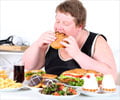- Stroke is a leading cause of death and disability globally and the fifth leading cause of death in the United States.
- Obesity is a major stroke risk factor amongst all ages and is even more significant for young adults.
- Higher body mass index (BMI) associated with increased risk of total stroke in every category of BMI.
- The number of ischemic strokes higher than the number of hemorrhagic strokes in every category.
Relationship between Obesity and Type of Stroke
The effect of obesity on the two types of stroke namely ischemic and hemorrhagic stroke was analyzed in a study conducted in the UK.Among the 344,534 women who had a healthy weight (BMI between 22.5 and 25), 0.7 percent (2,253) suffered an ischemic stroke and 0.5 percent (1,583) had a hemorrhagic stroke. Of the 228,274 obese women (BMI 30 or more), 1.0 percent (2,393) suffered an ischemic stroke and 0.4 percent (910) suffered a hemorrhagic stroke.
“We found that the risk of ischemic stroke, which is associated with a blockage of blood flow to the brain and is the most common stroke subtype, is increased in overweight and obese women. By contrast, the risk of hemorrhagic stroke, which is associated with bleeding into the brain, is decreased in overweight and obese women,” said study author Gillian Reeves, PhD, with the University of Oxford, United Kingdom. “Our findings add to the growing body of evidence that different types of stroke have different risk profiles.”
Stroke in Brief
A stroke can occur when the blood vessel that carries oxygen and nutrients to the brain is either blocked by a clot (ischemic stroke) or ruptures (hemorrhagic stroke). When that happens, the affected part of the brain dies due to lack of oxygen.
Majority of strokes (nearly 85%) are ischemic strokes and the rest are hemorrhagic strokes.
Relationship of Increasing BMI to Ischemic and Hemorrhagic Stroke
The study showed the following relationship between increasing BMI and the two types of stroke.
Every five-unit increase in BMI increased the risk of ischemic stroke by 21 percent. In the case of hemorrhagic stroke, every five unit increase in BMI decreased the risk of stroke by 12 percent.
The scientists also combined results from previously published studies on the subject. The collected data from worldwide available evidence confirmed that the risks associated with an increasing BMI are consistently greater for ischemic than for hemorrhagic stroke.
About BMI
The body mass index (BMI) or Quetelet index is derived from the height and weight of an individual. It is defined as the body mass divided by the square of the height, and is universally expressed in units of kg/m2, derived from mass in kilograms and height in metres.
BMI aims to quantify the amount of tissue mass (muscle, fat, and bone) in an individual in order to categorize the person as underweight, normal weight, overweight, or obese based on that value.
Commonly accepted BMI ranges are underweight: under 18.5 kg/m2, normal weight: 18.5 to 25, overweight: 25 to 30, obese: over 30.
Overall Relationship Between Obesity and Stroke
Kathryn Rexrode, MD, MPH, from Brigham and Women’s Hospital in Boston, wrote an accompanying editorial on the study. She sounded a note of caution that the lower risk of hemorrhagic stroke did not mean that overweight and obese women had a reduced risk of stroke overall.
“Higher body mass index, or BMI, was associated with increased risk of total stroke in every category and the number of ischemic strokes was higher than the number of hemorrhagic stroke in every category.
So higher BMI was not associated with protection or reduced risk of total stroke,” she said. “Obesity is a substantial stroke risk factor for all ages and even more alarming for young adults.”
Tips to Control Weight
- Eat fiber rich and filling foods when hungry.
- Avoid binging on sweets and desserts. Don’t store at home
- Count calories while eating. Limit to less than 1800 calories per day and restrict fat.
- Have a diet plan and stick to it.
- Try increasing workout time. More workout, more calories burned. A minimum of 30 minutes of physical activity 5 days a week is advised.
- Build lean muscle as muscle has higher rate of metabolism.
- Measure portions before eating, especially for fatty foods.
- Weigh yourself daily to prevent that upward creep.
- Include dairy in the daily diet. Eating at least three servings of dairy helped keep the weight off than persons who ate one serving or less. For women, it helps bone health too.
- Use the plate method for guidance – plainly put, half your plate should be vegetables and the rest should be divided evenly between lean protein and whole grains. For second helpings, limit yourself to vegetables, fruit or low-fat dairy.
- Watch less Television
- Never miss breakfast as it helps with long term weight loss. Healthy breakfast such as oatmeal or a fruit platter is advised.
- What is Stroke? - (http://www.strokeassociation.org/STROKEORG/AboutStroke/About-Stroke_UCM_308529_SubHomePage.jsp)
- About Stroke - (http://www.nhs.uk/conditions/stroke/Pages/Introduction.aspx)
- Body mass index - (https://en.wikipedia.org/wiki/Body_mass_index)
















